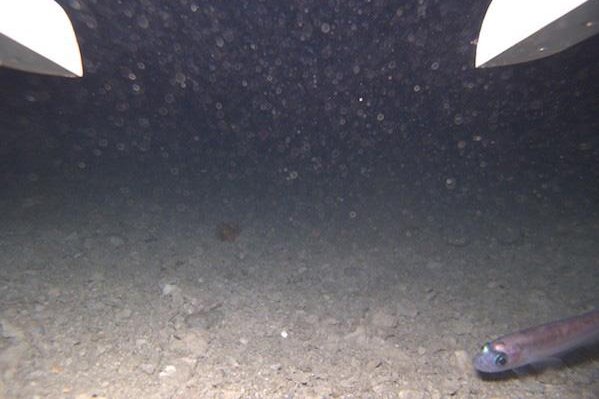1 of 2 | One of the translucent fish approaches the remote control robo-cam at the WISSARD grounding zone. Photo by Whillans Ice Stream Subglacial Access Research Drilling Project.
DEKALB, Ill., Jan. 22 (UPI) -- It shouldn't be all that surprising at this point -- living organisms defying the odds, that is. Life continues to turn up in the oddest places. This time, it's a fish scrounging out a lonely, frigid existence some 2,500 feet under the surface of Antarctica in a tiny wedge of seawater surrounded by ice.
Scientists weren't ice fishing when they stuck a tiny remote-controlled, camera-equipped robot down a small shaft dug deep into the Ross Ice Shelf. They simply wanted to get a better look at where the ocean, ice and earth all converge, as part of their work on Whillans Ice Stream Subglacial Access Research Drilling (WISSARD), a project organized by Northern Illinois University.
There -- some 500 miles inland and half a mile beneath the surface -- scientists found a tiny translucent fish subsisting in a pocket of sea water, surrounded on all sides by ice.
"I'm surprised," Ross Powell, a glacial geologist from Northern Illinois University who helped lead the expedition, told Scientific American. "I've worked in this area for my whole career. You get the picture of these areas having very little food, being desolate, not supporting much life."
These pockets of ocean life, secluded deep below the ice sheets that jut out from Antarctica, are ripe for further exploration, researchers say -- as is much of the deep sea.
While it was just one fish at first, slowly encroaching upon the strange light that had made its way down to their icy layer, several more appeared in the days following the initial discovery -- 20 to 30 in all, researchers say.
"It was clear they were a community living there," Powell said, "not just a chance encounter."
Researchers say understanding the the interplay between the base of the glacial ice shelf, glacial sediments and ocean currents is essential to predicting the effects of global warming.
"I have spent my scientific career studying how this ice sheet may contribute to future global sea level rise, Slawek Tulaczyk, a chief scientist on the WISSARD project explained in a recent press release. "However, I now realize that retreat of the ice sheet may also impact a unique ecosystem."















